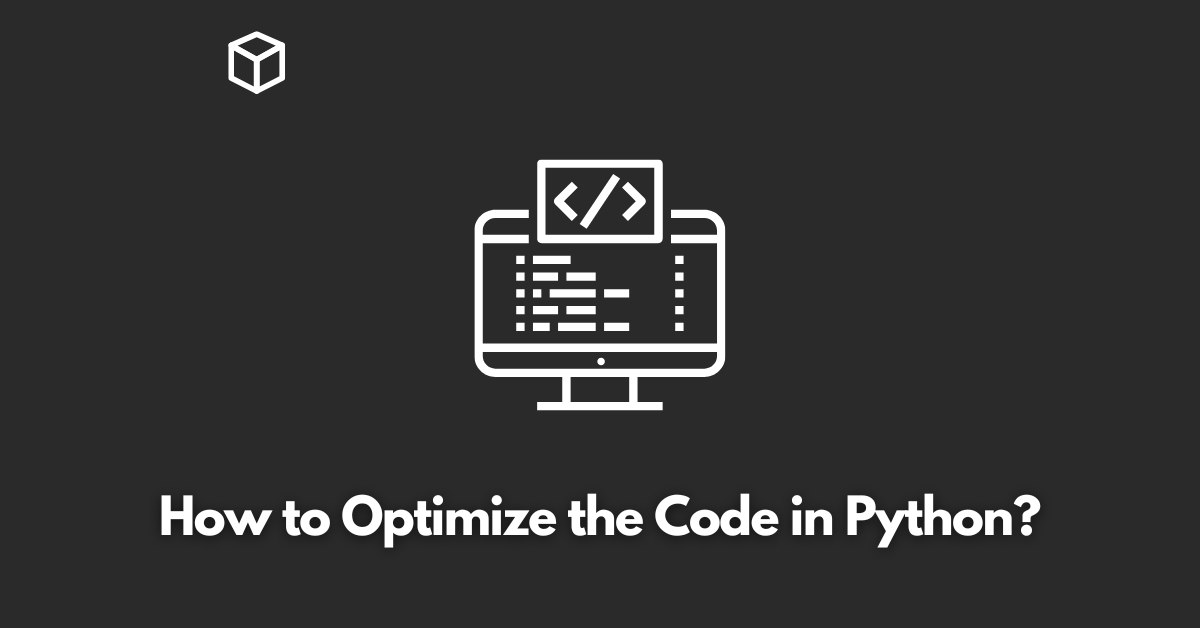Python is a popular programming language known for its simplicity and ease of use.
However, as your codebase grows and becomes more complex, it’s essential to optimize it to ensure it runs efficiently.
Optimizing code in Python can help improve its performance and reduce its memory usage.
In this article, we will discuss the importance of optimizing code in Python and the different types of optimization, including memory optimization and time optimization.
Profiling
Profiling is the process of analyzing the performance of your code to identify bottlenecks and areas for improvement.
It’s an essential step in the optimization process as it helps you understand where your code is spending most of its time and where it’s using the most memory.
There are several tools available for profiling Python code, such as cProfile, line_profiler, and memory_profiler.
cProfile is a built-in Python module that provides a simple way to profile your code.
It gives you an overview of how much time is spent in each function and how many times it’s called. line_profiler is another tool that provides detailed information about the execution time of each line of code. memory_profiler is used to profile the memory usage of your code.
To use cProfile, you can simply run the command “python -m cProfile myscript.py” in the command line.
To use line_profiler, you can run the command “kernprof -l myscript.py” and to use memory_profiler you can use the command “mprof run myscript.py”
Memory Optimization
One of the most critical optimization techniques for reducing memory usage in Python is to use generators instead of lists.
Generators allow you to iterate over a large dataset without loading it all into memory at once, which can be a significant performance boost when working with large datasets.
Further, using built-in data structures such as sets and dictionaries can also help reduce memory usage.
The memory_profiler tool can be used to identify memory bottlenecks in your code.
By using this tool, you can understand where your code is using the most memory and make the necessary changes to optimize it.
For example, you can use the memory_profiler to identify large data structures that are taking up a lot of memory, and then replace them with more memory-efficient alternatives.
Time Optimization
Another important aspect of optimization is time optimization.
The cProfile and line_profiler tools can be used to identify time bottlenecks in your code.
These tools provide detailed information about where your code is spending the most time, which can help you understand where to focus your optimization efforts.
There are several techniques for improving the performance of Python code, such as using built-in functions, using Cython or NumPy, and using parallel processing.
For example, using built-in functions can help improve performance by reducing the number of function calls required to execute a specific task.
Cython is a programming language that is a superset of Python and can be used to write C-extensions for Python.
NumPy is a library for the Python programming language, adding support for large, multi-dimensional arrays and matrices, along with a large collection of high-level mathematical functions to operate on these arrays.
Conclusion
Optimizing code in Python is an essential step to ensure that your code runs efficiently and effectively.
Profiling is a crucial part of the optimization process as it helps you understand where your code is spending the most time and where it’s using the most memory.
Memory and time optimization are two critical aspects of code optimization, and there are several techniques available for improving performance and reducing memory usage.




